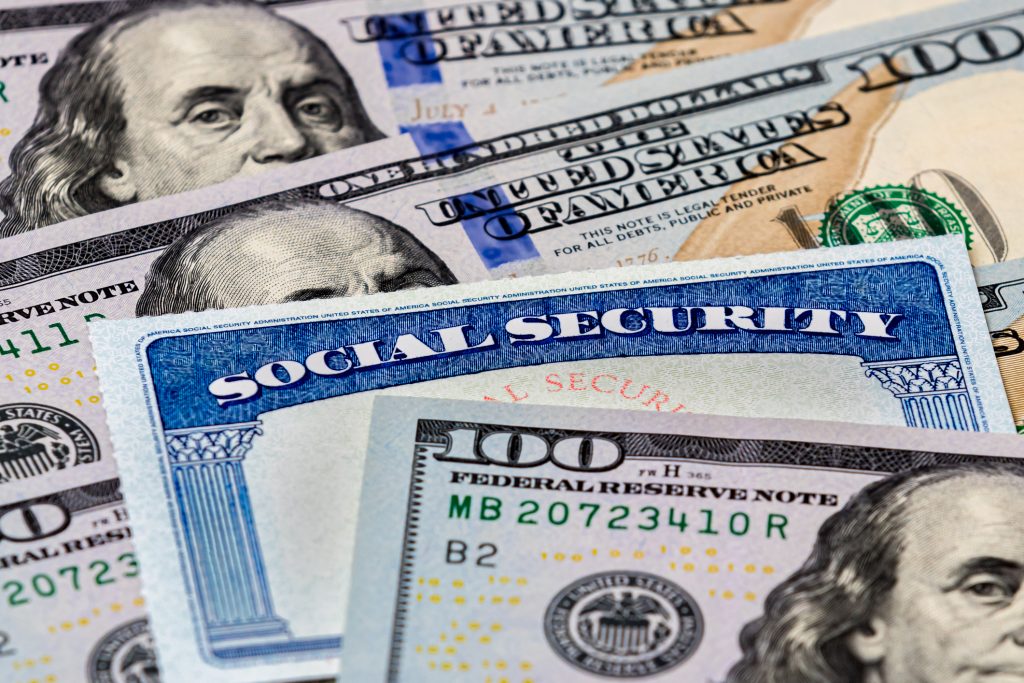
Image source: Getty Images
In mid-September, the Federal Reserve lowered its benchmark interest rate by half-a-percentage-point. And in the coming months, the Fed is likely to continue making rate cuts in response to cooling inflation.
You may be inclined to celebrate the Fed’s rate cuts because they should lead to cheaper borrowing. You may soon find that everything from auto loans to personal loans to mortgages are less expensive to put in place.
But if you’re hoping the Fed’s rate cuts will lead to cheaper groceries and gas, you may need to reset some expectations. In reality, those rate cuts aren’t likely to lower the cost of your everyday purchases.
Why rate cuts won’t drive prices downward
The Fed’s rate cuts should make borrowing less expensive, and that doesn’t just extend to consumers. It should be cheaper for large companies to borrow money in the near term, too.
But large companies are unlikely to pass those savings on to consumers. Why should they when they don’t have to?
Say you used to pay $3.69 for a gallon of milk, but in the past couple of years, the price has risen to $4.29. If your family drinks milk regularly, you’re going to pay what it costs to bring home a gallon if you need it for your coffee and growing kids. Your supermarket’s milk supplier may not be motivated to lower its prices, and your supermarket may not be so eager to cut you a deal, either.
This is just one example. The point, however, is that while the Fed’s interest rate cuts should make borrowing less expensive, they’re unlikely to make everyday goods less expensive. If you want to boost your savings account balance, you’ll need to do some legwork and savvy shopping.
How to save money on the items you can’t do without
You can’t rely on the Fed to make your gas station and supermarket bills less expensive. But you can still save money on things like food and fuel.
First, always dig around for grocery deals. Read through weekly circulars and make shopping lists based on sales. And don’t forget to load up on the digital coupons your supermarket makes available every week. The nice thing about digital coupons is that you can load them to your store card and get access to dozens of deals without having to worry about losing physical scraps of paper.
You can also save money on food by buying in bulk strategically. If you have items you use weekly, bulk buying makes sense.
And you don’t necessarily need a Sam’s Club or Costco membership to buy household staples in large quantities. Your local Target or Walmart might offer a number of essentials in bulk. And while Amazon doesn’t always have the best prices on food, you can save on certain items by using the Subscribe & Save program, which could knock up to 15% off of your costs.
Next, buy your gas strategically. Use an app like GasBuddy to compare prices at local fuel stations. If you have a Costco membership, try to do your food shopping when your tank is low so you can fill up at the same time. Not only does Costco’s gas tend to be cheaper than competing stations, but it holds the TOP TIER designation, which means it’s designed for better performance.
You can also save money on gas and groceries in a roundabout but effective way by using the right credit cards for these purchases. Some credit cards give you extra cash back at the supermarket or pump. Check out this round-up of the best credit cards for groceries and gas to enjoy your share of money-saving rewards.
Know what rate cuts mean for your wallet
Unfortunately, the Fed’s rate cuts are unlikely to drive down the cost of the everyday items you need. Granted, if you’re forced to charge those items on a credit card and pay off the balance over time, you might spend less money on interest in the wake of those rate cuts. But that’s the only form of savings you should expect in the context of stocking your home with the essentials you rely on.
However, with some savvy shopping and coupon-loading, you can find lower prices on the everyday purchases you make all the time. And if you swipe the right credit cards, you can rack up enough rewards to make up for the higher costs that are likely to stick around.
Alert: highest cash back card we’ve seen now has 0% intro APR into 2026
This credit card is not just good – it’s so exceptional that our experts use it personally. It features a 0% intro APR for 15 months, a cash back rate of up to 5%, and all somehow for no annual fee!
Click here to read our full review for free and apply in just 2 minutes.
We’re firm believers in the Golden Rule, which is why editorial opinions are ours alone and have not been previously reviewed, approved, or endorsed by included advertisers.
The Ascent does not cover all offers on the market. Editorial content from The Ascent is separate from The Motley Fool editorial content and is created by a different analyst team.John Mackey, former CEO of Whole Foods Market, an Amazon subsidiary, is a member of The Motley Fool’s board of directors. Maurie Backman has positions in Amazon and Target. The Motley Fool has positions in and recommends Amazon, Costco Wholesale, Target, and Walmart. The Motley Fool has a disclosure policy.
 benzinga.com
benzinga.com fool.com
fool.com



